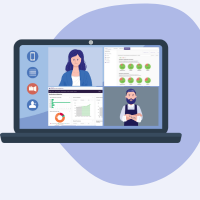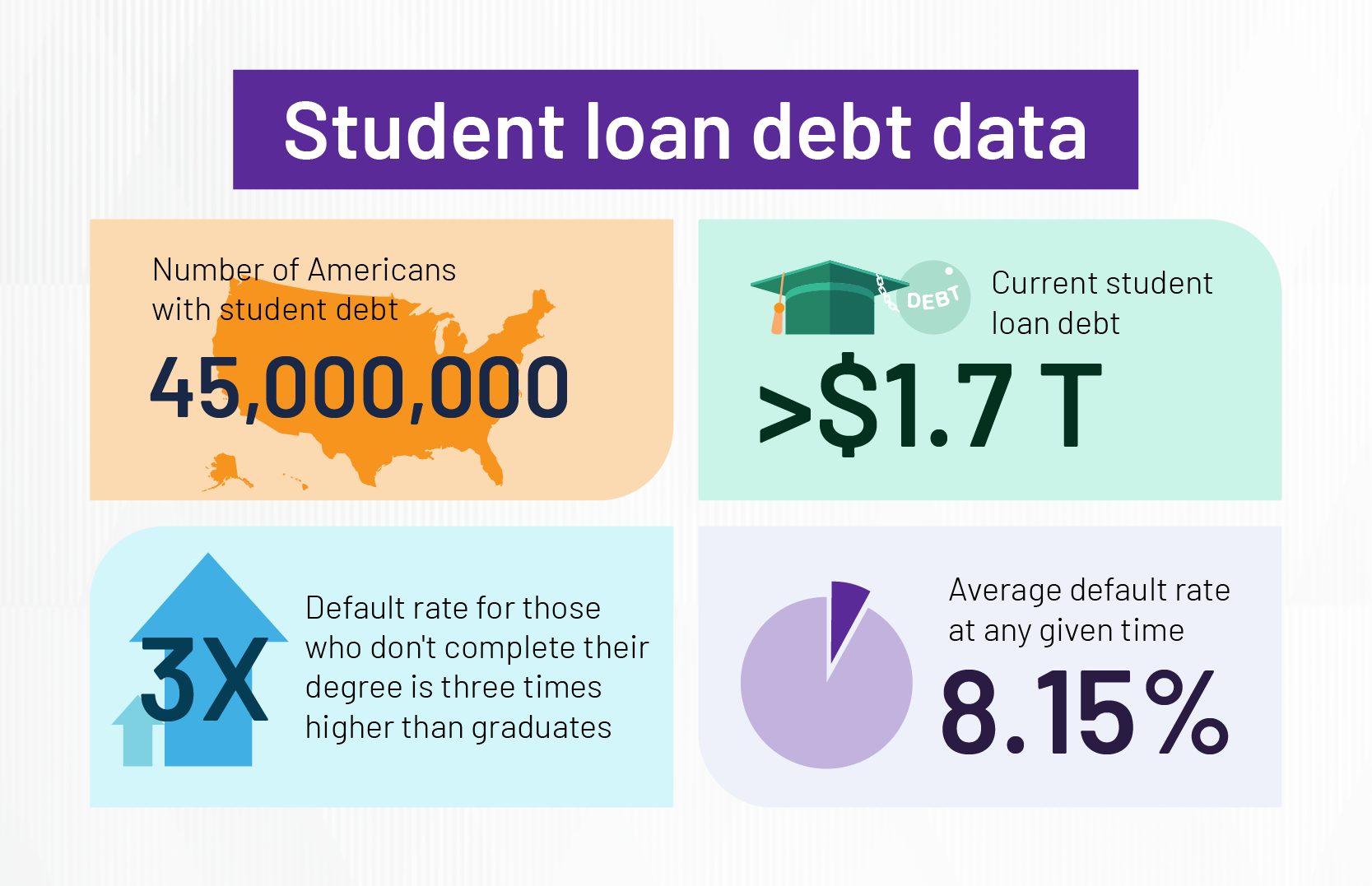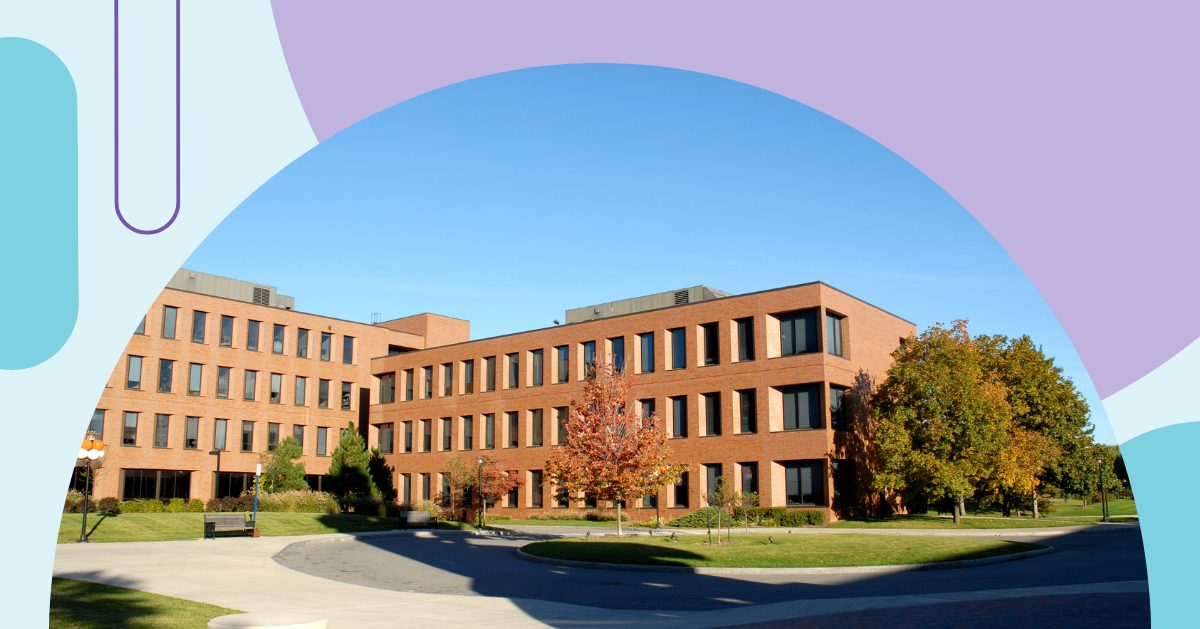
Diversity and inclusion have been behind many higher education initiatives for decades. While the result is a more diverse higher education landscape, some gaps remain, and institutions must prioritize creating positive learning environments for diverse student groups.
Culturally responsive education can help institutions close the achievement gap. It supports students from diverse backgrounds throughout their academic journeys and allows higher education institutions to create an engaging learning environment. There are many benefits to culturally responsive teaching. However, institutions must focus on tracking the results of this framework to provide maximum value to students.
What is culturally responsive teaching, and why does it matter in higher education?
Culturally responsive education centers around respecting and incorporating each student’s diverse background into learning. It involves every member of the faculty and administration understanding and valuing each student’s cultural identity, languages and experiences. In recognizing and embracing these cultural differences, higher education institutions can create a more inclusive and engaging learning environment.
A massive 80 percent of teachers are white, and they are bound to have natural biases just as anyone in any other profession. Responsive teaching aims to connect with students on a personal level. It uses their unique perspectives, cultural background and linguistic tools as a foundation for academic success. Faculty adopting this approach make lessons more relevant and meaningful to their lives. The approach helps students feel valued, respected and motivated to learn, leading to better academic outcomes and higher retention.
This type of teaching originates from the Gloria Ladson Billings framework of culturally relevant pedagogy in the 1990s. Her model aimed to address student achievement and help students affirm their cultural identity. Culturally relevant pedagogy has three principal elements:
- Student learning: It prioritizes each student’s intellectual growth and problem-solving ability.
- Cultural competence: It aims to create an environment where students affirm and appreciate their culture while they develop fluency and understanding of at least one other culture.
- Cultural consciousness: It teaches students how to identify, analyze and solve real-world problems, focusing on those that result in bias against underrepresented groups.
What constitutes culturally responsive teaching?
Culturally responsive teaching is an overarching method of approaching students from diverse backgrounds. Some of the cornerstones of this teaching framework include:
- Have a strong understanding of cultural diversity: Faculty should understand diverse groups and their cultural differences, including values, traditions, and societal contributions. They must understand diverse group challenges and incorporate this knowledge into their curricula and instruction.
- Allow different communication styles: Students from diverse backgrounds often have varied communication styles. Many value participatory learning, and faculty members unaware of this may reprimand students, which can have far-reaching consequences for their engagement.
- Use culturally relevant curricula: The best way to appeal to students with diverse backgrounds is to make the learning material relevant to them. Faculty should include different cultural perspectives in their instructions and contextualize issues within diverse groups.
The benefits of culturally responsive teaching
Culturally responsive teaching significantly benefits your students, faculty, and institution. Some of the many advantages include:
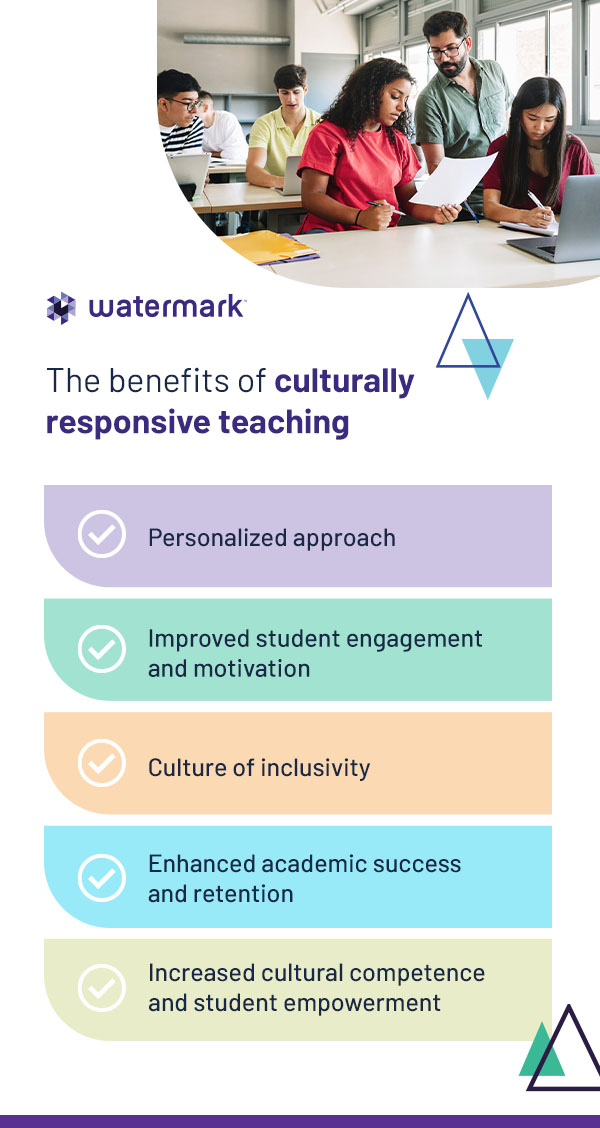
- Personalized approach: Culturally responsive teaching allows your faculty to better identify every student’s strengths and weaknesses and develop strategies to engage with them more effectively. They can also more effectively meet student needs and focus on inclusive curricula. This helps minority students maintain their path to qualification, regardless of their backgrounds.
- Improved student engagement and motivation: A focus on culturally responsive teaching connects academic concepts to each student’s everyday life. It makes the learning experience more personal, meaningful, and engaging. When students feel that their learning applies to their lives, they are more motivated to complete it. Culturally responsive education also sharpens critical thinking and problem-solving through the investigation of meaningful and culturally relevant problems. Students can analyze social justice issues, formulate questions, and generate solutions to authentic problems.
- Culture of inclusivity: When faculty approach students with respect for their cultures, they are more likely to participate in diverse and rich experiences. Culturally responsive education promotes a sense of safety and belonging, a significant predictor of future employment, training, and education. Culturally responsive teachers encourage connections between students and establish meaningful relationships with their classes, permeating the institution.
- Enhanced academic success and retention: Students from diverse cultural backgrounds are often more likely to drop out of higher education institutions. For example, Black students are less likely to obtain degrees due to bias and external responsibilities. Culturally responsive teaching is an opportunity to redress this imbalance through meaningful student engagement.
- Increased cultural competence and student empowerment: Culturally responsive teaching can increase cultural competence among students and faculty. When pedagogical methods prioritize every student’s diverse cultural background, faculty and students develop the ability to understand, appreciate, and interact effectively with people from diverse cultures. This teaching framework empowers students by allowing them to see their cultural background and strengths, creating a learning environment where they can be proud of their identities.
Key metrics for tracking the results of culturally responsive education
Tracking outcomes in culturally responsive education makes it more powerful than teaching in a vacuum. Data allows your institution to adopt a positive attitude of continuous improvement and empowers school leaders to meet students where they are. Key performance indicators (KPIs) have become effective methods to measure and maintain institutional standards. The right KPIs allow you to better understand the effectiveness of culturally responsive teaching programs, pinpoint areas for improvement, and demonstrate their value to stakeholders.
Some of the most crucial metrics for tracking culturally responsive education results include:
Student performance data
KPIs centered around academic success provide insights into the quality of students admitted and standardized test scores. Once students enroll at an institution, these metrics indicate their learning quality and progress. You can break down KPIs by student demographics, class standing, and subject areas and compare the results across diverse backgrounds to identify which students struggle and when. Surveying students is also a powerful method of collecting data. It provides valuable information on course effectiveness and student perceptions of the learning environment.
Measuring student trajectories over time offers valuable information on retention and graduation rates — arguably the most crucial KPIs for any higher education institution. Higher dropout rates among diverse or underrepresented groups suggest that culturally responsive teaching programs require a more practical approach. Similarly, the number of students from these groups who transfer to other institutions could indicate poor cultural fit.
Faculty data
Faculty data is as significant as student data in measuring the success of culturally responsive teaching. Data on faculty diversity holds cultural significance. Many students benefit from faculty representing diverse backgrounds and perspectives. Collecting data on teaching loads, research output, and student engagement for specific faculty members also identifies room for personal improvement.
Student engagement data
The quality of teaching and learning is a primary focus area in culturally responsive education programs. Students are more likely to attend classes that they feel are connected to their lives. Data on class and activity participation rates and attendance patterns can help you pinpoint classes that lack culturally responsive elements.
Any student engagement data helps you get a complete picture of student success within a culturally responsive framework. Faculty can collect engagement data during classes by noticing engagement behaviors like peer discussions and focus. They can also pinpoint disengagement, like phones out or heads down.
Student focus groups are another excellent avenue for qualitative and quantitative data collection. Faculty or administrators can meet with groups of diverse students and discuss how culturally responsive practices affect student engagement.
Student surveys and feedback
Many campuses and educational initiatives focus on student feedback. Culturally responsive teaching focuses on students and their cultural competence, which makes them perfectly positioned to deliver feedback. These surveys should collect culturally responsive data and be administered regularly to track changes over time. When administered as part of a strategy, your institution can track subtle changes in student success across diverse groups.
Surveys should meet students where they are. You can make it easy with smartphones, which elicits more responses. The more responses from diverse groups, the more significant the impact on student success. Student perspectives on faculty development and teaching allow instructors to focus on the effectiveness of culturally responsive teaching in real time. With the student at the center of the feedback, your institution can drive continuous improvement across the culturally responsive framework.
Leveraging software solutions to track results
Data is only helpful if you can access it. Measuring the impact of your culturally responsive education program on student success and personal identities. It gives you the tools to encourage students from diverse backgrounds to engage with each other and the course material.
Today’s technology allows us to access meaningful data in real time. It streamlines what used to be time-consuming steps like research, providing feedback, and evaluating massive amounts of data. Using the above metrics to analyze student performance data, in turn, improves faculty performance. It empowers your faculty to align their teaching strategies with culturally responsive initiatives.
Software solutions allow you to track and monitor your culturally responsive education initiatives regularly, so you can determine which strategies are beneficial and need improvement. Some of the many ways that innovative software solutions can help you achieve your culturally responsive teaching outcomes include:
Data collection and analysis capabilities
Purpose-built software solutions allow you to combine historical and real-time data to get an accurate picture of your culturally responsive teaching programs. It shows you where you came from and where to go, highlighting opportunities to support diverse student groups in and outside classes. This data can inform your curriculum mapping and align instructional strategies with culturally responsive goals.
Your faculty can test responsive teaching methods with simple student evaluations and assessments. They can use the qualitative and quantitative data they gain to drive improvement. As culturally responsive teaching hinges on connecting with students where they are, edtech software solutions can support the kind of personalized learning that makes these programs thrive.
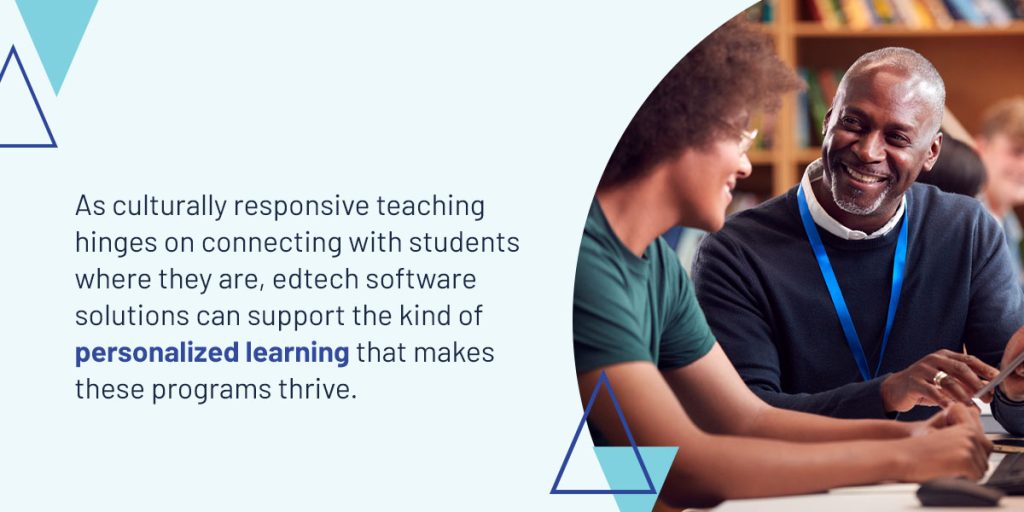
Tools for assessing student learning outcomes
Education software solutions simplify student engagement measurements by tracking participation, interaction, and task completion. You can leverage this data to monitor trends among diverse student groups and alert you when a student is moving off-course. Using these solutions, you can identify and engage with at-risk students before they fall behind or drop out. Faculty can schedule meetings with these students and offer culturally responsive resources to re-engage them in their academic journey.
Data is essential for developing culturally responsive lessons. You can leverage surveys, assessment scores, and other relevant data points to design the curriculum and boost student engagement. Student success data can also form the basis for comprehensive, culturally responsive programs. Your faculty can use it to determine strong areas in student learning and understand what they still need to learn. Software solutions make the data easily accessible, supporting faculty collaboration on culturally responsive teaching outcomes.
Feedback mechanisms for students and faculty
Software solutions also allow you to promote frictionless feedback from stakeholders in your culturally responsive teaching initiatives, including students and faculty members. Students can express what they enjoyed, what resonated with them, and where they faced challenges. Faculty can identify their growth areas and adjust their teaching accordingly.
Many students hesitate to share constructive feedback with their faculty and administration face-to-face. Survey and evaluation software allows students to share their opinions anonymously online, increasing their response rates and enhancing the value of their feedback.
Best practices for tracking responsive teaching results
Strategies for tracking responsive teaching results are as important as the teaching itself. Some methods to enhance your culturally responsive education approach include:
Establish clear goals for culturally responsive teaching outcomes
Culturally responsive teaching involves various materials and instructional approaches. Metrics are all the more valuable when you’re aiming for specific goals. Objectives around building relationships may be challenging to quantify, but many measurable goals exist, from including culturally relevant materials to fostering assessment equity.
Start with assessing your current understanding and practices and gather student feedback to identify opportunities for improvement. Measurable goals for culturally responsive teaching outcomes could include:
- Increase engagement: By the end of a predefined period, 60 percent of students and faculty will report that students are more engaged in the classroom due to the inclusion of culturally relevant materials.
- Improve academic performance: Achieve a 5 percent increase in standardized test scores among students from diverse backgrounds by using software solutions to drive personalized instruction strategies.
Train faculty and administrators to use software tracking tools
You can leverage your data better when your team knows how to use software tracking tools to measure the results of culturally responsive teaching. Providing your faculty with targeted training empowers them to analyze data and adjust their teaching strategies to meet diverse student needs.
Engage students to gather diverse perspectives
You can engage students in every element of the higher education experience. When you make them feel comfortable in their learning space, they’re increasingly willing to share their perspectives on your teaching programs. Invite students to share their cultural experiences and viewpoints about course topics. Create platforms that reach students where they are, like online discussion boards, where they can share their thoughts on source materials and interact with students from diverse backgrounds in a safe space.
Open an authentic and transparent dialogue with students. Tell them about your culturally responsive teaching objectives and construct surveys that target their input.
Review and adjust your strategy regularly based on real-time data
With innovative analysis software, you can receive updates in real time. When you know how students respond to your program at the moment, you can identify the most critical improvement areas and focus on those. Your faculty can adapt their teaching, revise their course materials, and adjust their engagement strategy to better meet each student’s diverse needs.
Regularly analyzing student participation, performance, and feedback data allows your faculty to make informed decisions to enhance their cultural responsiveness. These reviews and adjustments create a dynamic and proactive environment that fosters academic success and empowers students to embrace their cultural differences.
Enhance your culturally responsive education strategy with Watermark
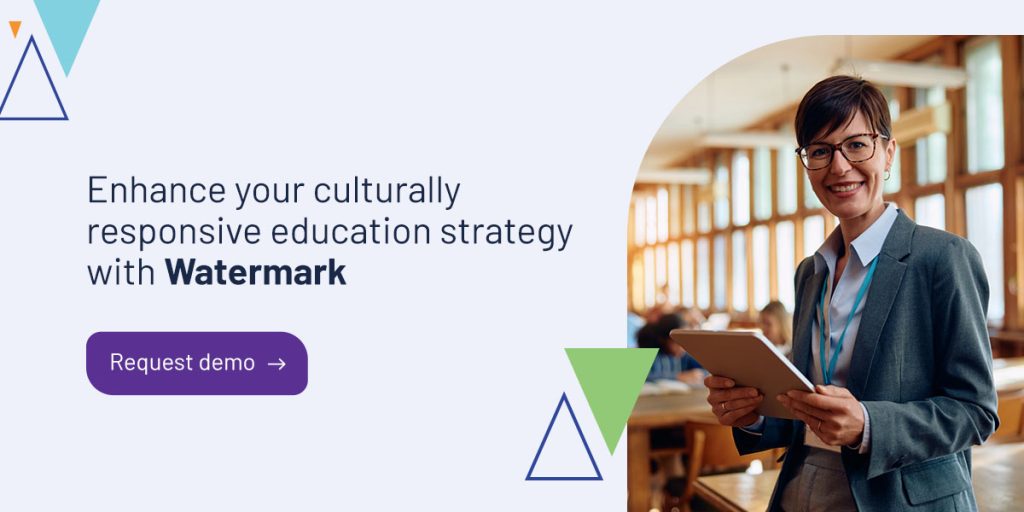
Culturally responsive education is one of the fundamentals of academic success for today’s students. It provides a more personalized approach to learning for students from diverse backgrounds and allows higher education institutions to boost retention and engagement.
Your institution must leverage data to get the most out of a culturally responsive teaching initiative. Establish a central program for assessment, program review, and strategic planning processes with Watermark. Our software lets you define your culturally responsive goals, understand how you meet learning outcomes, and improve educational quality with one user-friendly interface. With Watermark Student Success & Engagement, you can support the unique needs of students from diverse backgrounds and boost student retention with proactive, tailored support. Request a demo of our solutions and start your culturally responsive teaching journey today!


